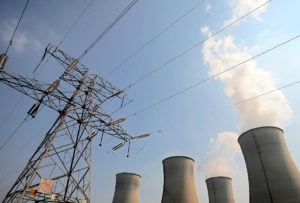Transitioning to a low-carbon energy system begins with the power sector. Globally, wind and solar are expected to play an ever-larger role. In China, a system with a high share of variable renewable energy is known as a “new type power system”. The variability of renewables creates new challenges, chief among them maintaining the reliability of the system while controlling costs.
On 10 November, China introduced a scheme in which coal power plants receive a fixed payment based on their capacity, instead of only being paid for the electricity they generate. This “coal capacity-payment mechanism” aims in part to help the coal sector transition towards providing backup for variable renewable energy, rather than being the main source of electricity. While intended to bolster energy security, the new design does have drawbacks that could result in higher costs or a slower transition to renewable energy.
What sets China’s energy transition apart?
Although the challenges China faces as it shifts to new energy sources resemble in many ways those in other countries, its situation remains unique. It differs from countries in Europe that are further along in the clean energy transition in three main ways.
First, China continues to experience a rapid increase in electricity demand, driven not only by economic growth, but also by climate change. Spikes in electricity demand during heatwaves contributed to outages in 2022, especially because these coincided with a period of drought that constrained hydropower output.
Second, most regions in China rely on coal power for the majority of electricity supplies, and lack a low-cost source of gas that could support variable wind and solar generation. Even after retrofits, coal power plants are less flexible than gas-fired units, and operating them flexibly also brings additional cost.
Third, the design of the country’s energy markets prioritises mid- to long-term power contracts and inhibits flexible trading of electricity based on short-term market signals. In particular, the inflexibility of power trading between provinces pushes them to lock in more generation capacity locally rather than rely on regional reserves. As experts from Energy Foundation China have written, unlocking short-term flexibility through spot markets and regional trading can help China transition to clean energy at lower cost.
At present, however, the transition to renewables is accelerating, while the adoption of flexible markets and inter-provincial trading is proceeding at a more deliberate pace. At the same time, provinces have rushed to add new coal capacity to bolster internal electricity supplies. This means such plants will be utilised at lower levels than would normally be necessary to recover their costs. Given caps on wholesale electricity prices – set in 2021 by central government at 20% above a coal-fired electricity reference price – low utilisation generally implies financial losses for coal plants. These losses could eventually bring about financial distress at state-owned power companies and the banks that support such investments.
Coal capacity payments are therefore viewed as a first-choice solution to the problem of financial losses at coal plants.
What does the new mechanism do?
The National Development and Reform Commission’s (NDRC’s) notice on establishing the capacity payment mechanism contains the following main points:
- Coal plants in most provinces will receive a monthly payment of 100 yuan per kilowatt (y/kW) of their capacity. While those in seven provinces with a higher share of low-carbon energy will receive 165 y/kW. These are Henan, Hunan, Chongqing, Sichuan, Qinghai, Yunnan, and Guangxi. (The two rates represents 30% and 50% of 330 y/kW, which the NDRC has determined to be the average total fixed costs of a coal plant.)
- Coal plants that do not meet national standards for flexibility, efficiency, or environmental performance will not qualify for the payments.
- The payments will be reduced if coal plants are unable to operate at maximum capacity when their power is chosen for dispatch. The penalty is a 10% reduction in the first instance, rising to 50% in the third instance, and 100% in the fourth. If a plant is penalised to the 100% level on any three months in a calendar year, it will no longer qualify for payments.
The policy applies to all provinces except those with a capacity mechanism already in place, which currently includes only Shandong. In 2020, the province instituted a flat per kilowatt-hour payment to coal plants, which it describes as a capacity payment. The national capacity payment resembles the Shandong design in that it applies only to coal plants, and is set administratively. It differs in that it is based on capacity rather than electricity generated.
Risks of the policy
To date, the national capacity-payment mechanism is restricted to coal-fired power plants, and is aimed at solving the perceived problem of financial losses at such plants. The special urgency to address the issue likely relates to the pressure to ensure that provincial policy-driven mandates to add more coal for energy security do not worsen the financial position of the major power-sector players. There has been little discussion of ‘technology-neutral’ capacity markets that do not discriminate regarding generation technology – in other words markets that give room for energy storage, demand response, or renewables paired with storage.
Capacity markets see power generators bid for the right to provide capacity when it will be needed in a future period, often a year or more down the line.
Demand response means balancing the demand on power grids by coaxing customers, typically through prices or monetary incentives, to shift their electricity use to times when it is more plentiful or general demand is lower.
Similarly, there are no capacity mechanisms that include payment for performance – that is, scoring fast-response technologies such as batteries more highly than slow-responding ones like coal plants. Such practices have been tried successfully in Europe and North America, opening up capacity markets to cleaner technologies while reducing costs.
The justification for excluding other technologies from capacity payments is simplicity. Yu Hongguang at Guotai Junan Securities, an investment bank headquartered in Shanghai, described the reasoning behind a flat, coal-only payment, versus a market-based or technology-neutral approach, in an article in March:
[First,] the capacity-compensation mechanism is simple and easy to implement in practice and can be quickly adopted under China’s current power market system. [Second,] the capacity-compensation price is relatively fixed, will not cause major fluctuations in retail electricity prices, and the intervention of regulatory agencies can also ensure that users’ electricity costs are within the range that society can afford.
Notably, the plan for a coal-only capacity-payment mechanism differs from the language of the NDRC’s 2022 document calling for a national power market blueprint by 2025. That document seemed to envision a more flexible, market-oriented design for such a mechanism:
Establish a cost-recovery mechanism for power-generation capacity based on local conditions. Guide various regions to establish a market-oriented power-generation capacity cost-recovery mechanism based on actual conditions, and explore various methods such as capacity-compensation mechanisms, capacity markets, and electricity-scarcity prices to ensure fixed-cost recovery of power sources and long-term power-supply security.
This language seemed to imply that policymakers at the time saw capacity payments as forming part of a larger system, working together with markets to promote energy security while also responding to “actual conditions” such as over- or under-capacity. China has experienced both situations in the past decade, and has often struggled with problems of overcapacity in the coal power sector specifically.
Positive, and cautionary, tales from abroad
Capacity markets and payments are a hot topic not just in China, but worldwide. Most regions that have adopted them have worked to ensure they include a variety of technologies, and are narrowly tailored to keep costs low and prevent overinvestment in capacity.
Nevertheless, capacity payments in Europe and North America have encountered frequent problems and criticism. As the Regulatory Assistance Project thinktank has noted, such payments risk systematic over-investment in capacity at the expense of other reliability solutions. This was seen in the case of four regional transmission organisations in the US having adopted capacity payments of some kind, all of which have experienced overcapacity exceeding planning targets.
At the same time, in several cases, market-based capacity payments have been perceived as pushing the energy transition forward. This is especially so in promoting demand response and aggregation of smaller resources, which can offer reliability services at lower cost than conventional generation. In the PJM Interconnection, a regional transmission organisation that serves several states in the US Midwest, demand response has bid in capacity auctions alongside other forms of capacity for almost a decade, typically providing around 9,000 megawatts of capacity. This has generally resulted in lower prices for capacity than if the market had relied solely on generation.
One policy that has encouraged technology openness in the US is national rules requiring capacity markets to recognise and provide extra compensation to power plants for technologies that can respond more quickly when the system needs backup. These pay-for-performance rules were introduced in 2011, and have encouraged adoption of capacity and ancillary services rules that benefit the most flexible technologies.
Energy storage technology has also benefitted from market designs that award capacity payments based on a combination of price and performance. For example, in the UK, battery energy storage projects have won around 10% of annual capacity auctions recently. Not only will such payments encourage investment in this space, but they also help planners and policymakers forecast the future need to keep conventional generation online.
A third policy design factor is ensuring that capacity payments are limited in order to meet the actual need for capacity. Generally, capacity market auctions take place one or two years prior to when capacity will be provided. In several regions, capacity markets cover only periods of the year when reliability is most at risk. In the UK, for example, auctions cover the winter months. When PJM Interconnection shortened the time lag between auctions and when capacity is provided, the result was more accurate forecasting of demand, and lower cost.
For this reason, the current EU regulations on capacity markets require such schemes be adopted on a temporary basis only, when an open process has identified a specific likelihood of inadequacy. This requirement resembles the capacity reserve created by Germany in 2016 that resulted in several coal power stations receiving payments to enter a mothballed state, from which they would only be re-activated if absolutely needed. This system prevents the capacity payments from distorting the spot market prices in the electricity market. As it happened, the energy crisis that followed the Russian invasion of Ukraine did require the activation of this reserve. (However, Germany’s coal power use is still far below the level of prior years, and the country remains on track to phase out coal by 2030.)
As the above examples show, designs of capacity payments in the US and Europe are specifically tailored to reduce cost and, in several instances, to promote advanced, low-carbon technologies. Reducing cost is important in China as well: overinvestment in coal power could lead to excess costs of between 1.9 to 3.98 trillion yuan, according to estimates from scholars at Renmin University.
When the new coal capacity-payment mechanism was announced, officials at the NDRC and National Energy Administration expressed the view that the extra costs of the payments to coal generators would not increase retail power prices, because this would be compensated by lower prices paid to other generation sources. It is true that renewable energy costs have fallen over time. However, it is unclear whether or not reducing market-based payments to renewable generators to pay an administratively set subsidy to coal plants will distort investment signals and further incentivise construction of coal capacity in regions that are already adequately supplied. Ultimately, over-investment in coal will need to be paid for by society, either through power prices or the financial system.
A path forward
In the weeks following the release of the new capacity-payment policy, there have been some signs of openness to other, more climate-friendly designs. For example, Shandong has announced that energy storage will become eligible for capacity payments. In China, national policy often reflects a combination of best practices already underway at the provincial level. Such pilots have the potential to eventually contribute to a more technology-neutral approach. And as spot market pilots gain experience and the country moves towards a national power market design for 2025, there remains the potential to introduce market-oriented components into the capacity-payment design. Such measures are important for ensuring the low-carbon energy transition remains on track, and that efforts to bolster energy security do not result in unacceptable economic costs for society.









